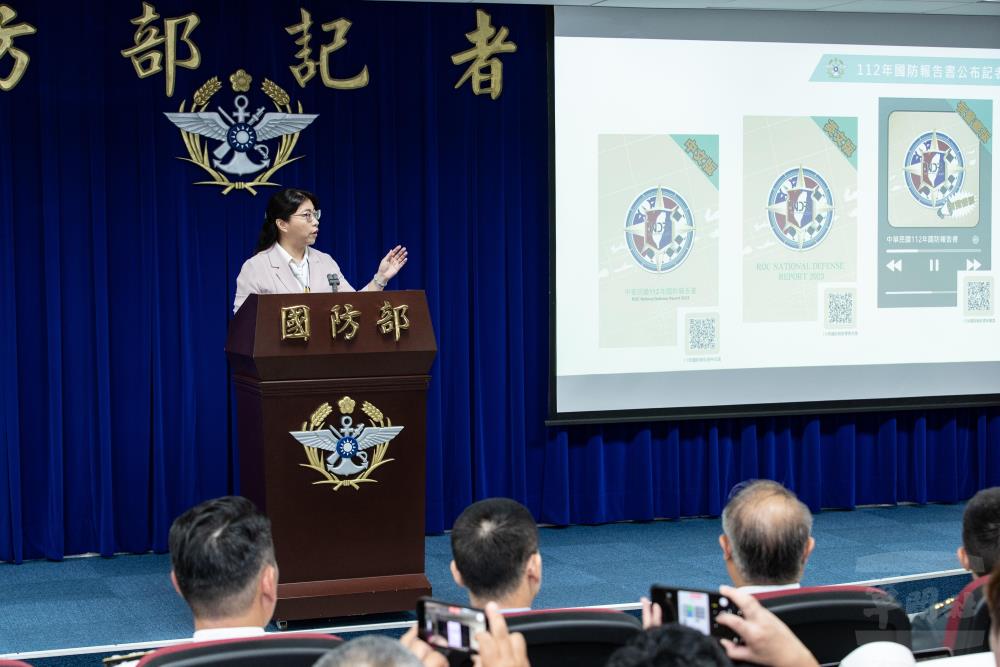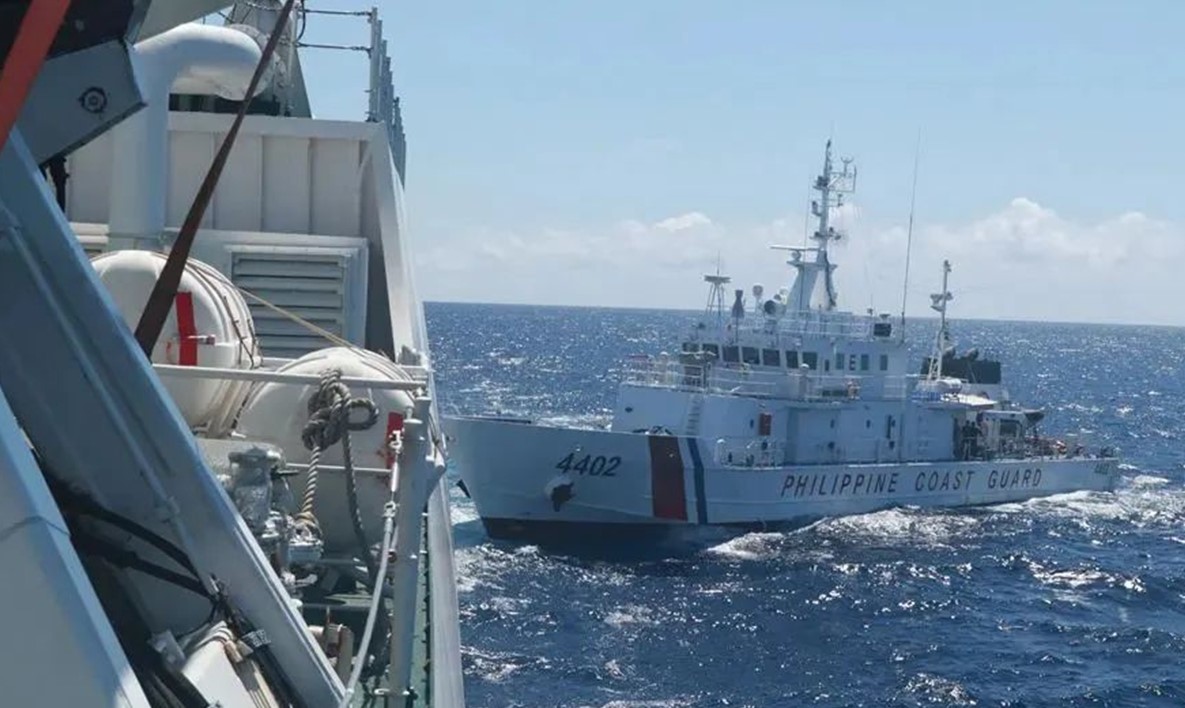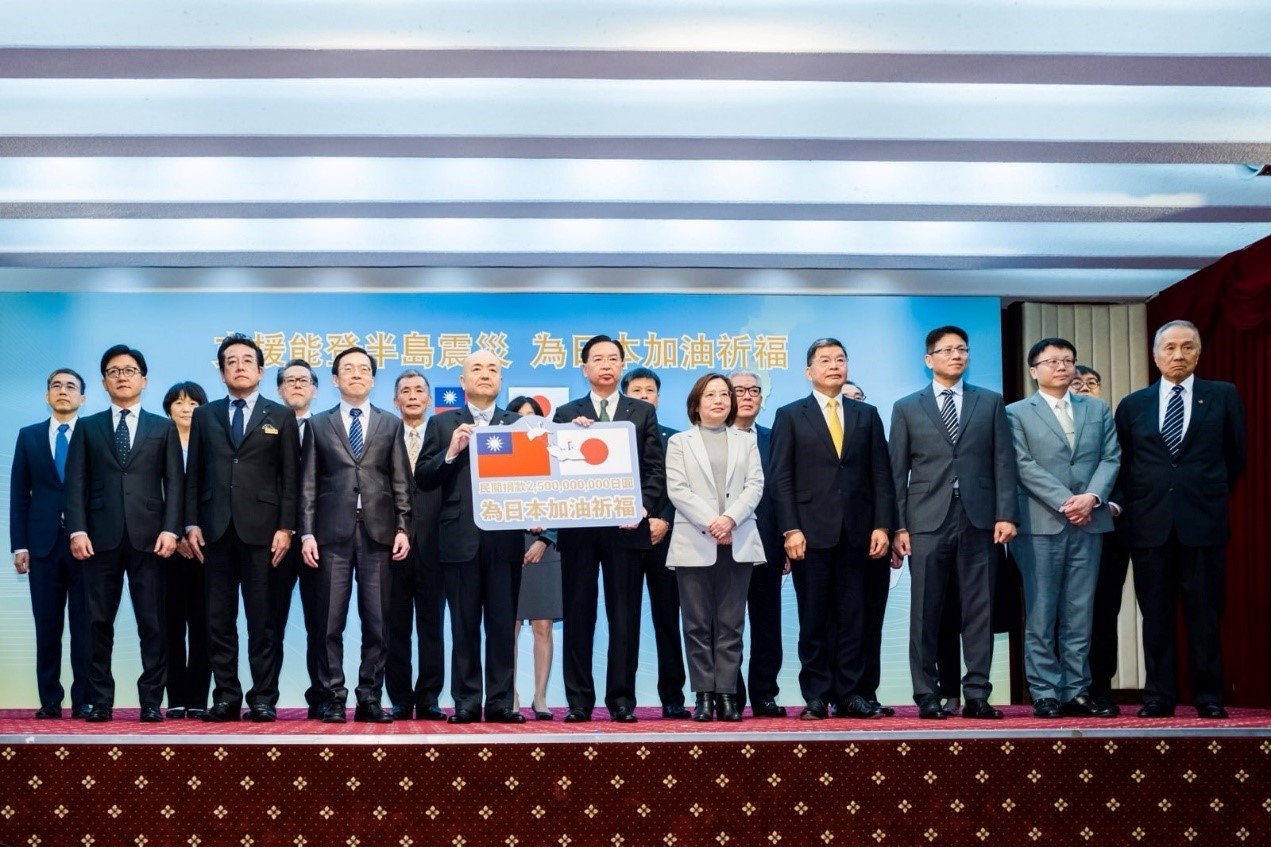Both Taipei’s and Washington’s defense information campaigns require higher profiles, greater details, and increased frequency. If there is to be victory over the CCP’s ambitions, it will start with superior defense information and public education campaigns. Picture source: Military News Agency, September 12, 2023, https://mna.gpwb.gov.tw/news/detail/?UserKey=787690a9-48d1-480a-a86d-671232971c04.
Prospects & Perspectives No. 58
Assessing the 2023 ROC National Defense Report
By Richard D. Fisher
Democratic polities require information in order to make informed decisions about what is required to deter or defeat crucial threats to their survival, such as from the Chinese Communist Party (CCP), and increasingly, its allies Russia, North Korea, and Iran.
Two major government reports will provide the justifications leaders and legislators require to establish the priorities and resources necessary for victory: the bi-annual ROC National Defense Report from Taiwan, and the annual China Military Power Report (CMPR) from the United States.
Two Reports
On September 12, 2023 the Taiwan Ministry of National Defense (MND) released its ROC National Defense Report 2023 (NDR23), the 17th edition of a bi-annual report first issued in 1992, and the second edition to be published simultaneously in Chinese and English languages.
At 188 pages with charts and images, NDR23 is about as long as the 192-page U.S.
Department of Defense China Military Power Report 2023 (CMPR23), the 24th edition of which was issued on October 19, 2023.
While both reports are issued to inform their respective citizenry, the NDR23 not only addresses threats to Taiwan, but also describes Taiwan’s strategic environment and strategies, and foreign relations, and explains Taiwan’s defense organization, military capabilities, and procurement needs.
In contrast, the CMPR23 focuses mainly on the strategies of the CCP and how it has improved the capabilities of its People’s Liberation Army (PLA) over the previous year, with a longstanding focus on the CCP-PLA’s accumulating threat to Taiwan.
As the CCP prizes the denial of military transparency as a multiplier for its military capabilities, it would never publish such detailed reports to inform the citizens of China, especially to the degree Taiwan does, which lists by name the 98 individuals that produced NDR23, starting with Taiwan Minister of Defense Chiu Kuo-cheng — a list not offered by the CMPR series.
Both reports seek to balance the requirement to inform with the need to protect information and sources; in contrast to CMPR23, NDR23 has to address a broader range of issues to justify the MND’s budget and affirm its legal character in a still-consolidating democracy.
Both documents seek to address domestic and foreign audiences.
While the CMPR series has for two decades offered the best definition from any government of the CCP-PLA challenge, Taiwan’s NDR23 seeks to build confidence in Washington and Tokyo, that as they increase military preparations against China and increase support for Taiwan, that Taipei also takes seriously the urgency to better its defenses — but to do so without alarming Taiwanese or alienating its “allies.”
Imbalance of Criticism
This leads essentially to an imbalance of criticism, which may diminish the ability of Taipei and Washington to achieve their respective strategic-military goals.
For example, while NDR23 provides a useful description of the evolution of U.S. strategy and support for Taiwan, and the growing military investments of its immediate democratic neighbors, it does not offer a critical assessment of these efforts — such how the PLA’s growing regional nuclear weapons, now bolstered by North Korean nuclear weapons, has become one of the greatest threats to deterrence of war in Asia.
Taiwan has long had programs for long range non-nuclear strike missiles that until recently were opposed by Washington, so these are not reviewed in Taiwan’s NDR. But this should change as the PLA’s tactical nuclear weapons and Low Yield Nuclear Weapons threat means Taiwan will require far larger numbers of long-range missiles.
It could be argued that such concerns should be confined to official conversations; but these become muffled as Washington confronts multiple real wars by Iran, North Korea, and Russia —all in some way supported by and cooperating with China.
Thus, it is necessary for Taipei to address the broader audience reached by its NDR to focus Washington’s attention on how to rapidly increase Taiwan’s long range deterrent capabilities.
For its part, Washington has not hesitated to voice its criticism of the NDR and of some of Taiwan’s larger strategic priorities.
In a September 15, 2023 analysis on the web page of the U.S. government-funded RAND Corporation, Michael Lostombo states, “Taiwan's most recent National Defense Report has a section defining threats to Taiwan but does not identify an invasion as a threat. Instead, it emphasizes the threat of coercion.”
While the NDR23 does indeed examine the CCP’s increase in coercive military activities, especially those that followed the August 2022 visit of former Speaker of the U.S. House of Representatives Nancy Pelosi, it is true that the NDR should provide greater details of the CCP-PLA’s invasion threat to Taiwan.
The NDR should describe in detail a possible CCP-PLA invasion, how many waves of amphibious and airborne troops, and how civil shipping and airliners will be used — the latter could advance a much-needed immediate embargo on selling airliners and support systems to China.
In addition, the NDR should offer details about what will happen to Taiwan following a CCP conquest: the potential impact of an early reign of terror, how many Taiwanese could be sent to camps or executed; and how quickly will the PLA build nuclear-naval-airborne bases to wage war against Japan, the Philippines, and beyond.
Also needed is are estimates of how a Chinese invasion and conquest of Taiwan will constrict the economies of Asia, Europe, and the United States after the termination of commerce with China; the burden of massive refugee flows; the impact on energy, technology, and supply chain flows — all to help increase determination in Washington and other capitals to stop such a war from starting.
Again, Taiwan is competing in Washington and on the world stage for military resources and political support as these capitals try to contend with multiple China-connected wars; securing that support is far more important than trying to avoid alarming Taiwanese voters.
But in addition, RAND’s Lostumbo suggests that Taiwan “divest ruthlessly” from expensive programs that do not contribute to the immediate defense of Taiwan, like its Indigenous Defense Submarine (IDS) and new fighter aircraft programs. This reflects the longer Washington campaign to redirect Taiwan’s defense strategies and investments to stress “asymmetric” military capabilities.
The NDR would not be so impolitic as to remind that the strong support by the Tsai Ing Wen Administration for major indigenous Taiwan weapons programs was spurred by Washington’s “drought” in the sale of major weapons during the Clinton, Bush and Obama administrations.
While there may be an impressive “consensus” in Washington today to defend Taiwan against a CCP attack, experience dictates that Taiwan not rely excessively on Washington.
Doubts can only be reinforced by the October 16, 2023, New York Times article by Oriana Skylar Mastro, an assistant professor at Stanford University and “strategist” who served in various U.S. military assignments, who after visiting China calls for “reassuring” China by returning to U.S. Taiwan policies toward “ambiguity” and “political neutrality” redolent of the Clinton, Bush, and Obama Administrations.
The correct way forward is for Taiwan to significantly increase defense spending to afford, and with Washington’s support to acquire, new indigenous long-range weapons to defeat the PLA at a far distance, and to build or buy the asymmetric capabilities that defeat an invasion.
Consider that actual success in deterring a PLA invasion will only increase Taiwan’s requirement for long range fighters, submarines, and missiles to deter a PLA that is soon to become a global military power, not just one focused on seizing Taiwan.
Modern Reports Required
Will there be a ROC National Defense Report 2025, or more to the point, why should Taiwan’s moral and strategic cause have to wait another two years for an expansive explanation?
The year 2023 has seen the emergence of a new Global Cold War that could result in multiple hot wars, with an overarching threat that the China-led axis including Russia, North Korea, and Iran, could soon accumulate an overwhelming strategic nuclear threat which provides cover for their regional wars — even regional nuclear wars.
Both Taipei’s and Washington’s defense information campaigns require higher profiles, greater details, and increased frequency.
The CCP-PLA’s daily military coercion efforts should be analyzed weekly on Taiwan’s television and social media outlets, combined with campaigns that build support for Taiwan’s military forces and military budgets.
Taipei can work with the U.S., Japan, and South Korea to increase their publics’ awareness of how the CCP operates, and how it threatens Taiwan, and by extension, their own security.
In Washington, the annual CMPR should grow into a bi-annual exercise that also stresses video and social media products and joint messaging with the leadership of the Congress and the wider public.
If there is to be victory over the CCP’s ambitions to destroy Taiwan’s democratic culture and to then contain and destroy other democracies, it will start with superior defense information and public education campaigns in Taipei and Washington.
(Richard D. Fisher, Jr. is a senior fellow with the International Assessment and Strategy Center.)





